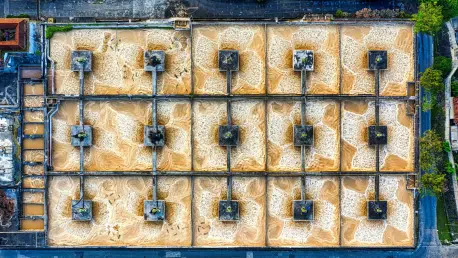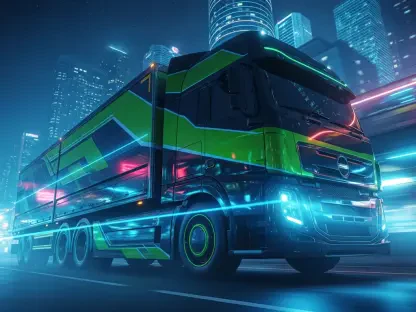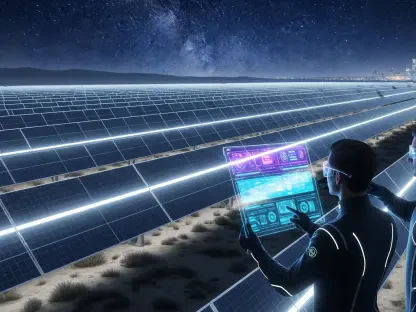Imagine a vast network of power lines stretching across millions of miles, vulnerable to wildfires, vegetation overgrowth, and the wear of aging infrastructure, posing constant risks to safety and reliability. In the United States, utilities face mounting challenges in maintaining this critical grid, often relying on outdated methods like helicopter surveys and labor-intensive ground inspections that are not only costly but also expose workers to significant hazards. Now, a groundbreaking partnership between Censys Technologies and STRIXDRONES USA is set to transform this landscape with cutting-edge drone technology. By combining advanced fixed-wing drones with autonomous docking systems, this collaboration promises a safer, faster, and more efficient way to monitor power grid infrastructure. This innovative solution addresses pressing industry needs, offering a glimpse into a future where automation redefines how essential assets are managed and protected from emerging threats.
Pioneering Autonomous Drone Technology for Grid Monitoring
The cornerstone of this transformative partnership lies in the integration of Censys Technologies’ Sentaero 6 drone with STRIXDRONES’ autonomous docking station, known as the STRIX Dock. The Sentaero 6 is a long-endurance, fixed-wing drone engineered for Beyond Visual Line of Sight (BVLOS) operations, featuring vertical take-off and landing capabilities. This design allows it to cover extensive areas while capturing high-resolution data and imagery, critical for identifying issues in power grid infrastructure. Paired with the STRIX Dock, a rugged, military-grade system built to withstand extreme weather conditions such as scorching heat or heavy snow, the setup enables remote launches, landings, and recharging without human intervention. This synergy eliminates the need for on-site pilots or ground crews, slashing operational costs for utilities. More importantly, it enhances safety by reducing human exposure to dangerous environments, marking a significant leap forward in automating routine inspections of vast electrical networks.
Beyond the technical prowess of the equipment, this solution introduces a new level of operational efficiency to power grid monitoring. The autonomous nature of the system supports continuous inspection cycles, ensuring that data is collected and transferred seamlessly from remote locations. Utilities can now monitor critical infrastructure in real time, identifying potential problems like equipment wear or vegetation encroachment before they escalate into major failures. The ability to operate without direct oversight not only streamlines workflows but also allows for rapid response to emerging threats, such as those posed by wildfires in high-risk areas. This technology represents a shift away from reactive maintenance toward proactive management, where data-driven insights become the foundation for decision-making. As environmental and operational challenges grow, the adaptability of this drone-and-dock combination offers a scalable framework for utilities aiming to modernize their approach to asset protection across diverse terrains and conditions.
Scalability and Impact on Nationwide Infrastructure
Addressing the sheer scale of the U.S. power grid, which spans millions of miles of transmission and distribution lines, requires innovative solutions that can operate over vast territories. The partnership between Censys Technologies and STRIXDRONES delivers just that, with a system designed for large-scale deployment through autonomous drone networks. Permanent docking stations can be strategically placed in critical areas, enabling round-the-clock surveillance of infrastructure. This setup facilitates early detection of issues such as vegetation overgrowth or equipment malfunctions, significantly reducing the risk of power outages and catastrophic events like wildfires. By automating inspections across expansive regions, utilities gain the ability to maintain consistent oversight without the logistical burden of manual checks. This scalability aligns with industry trends toward leveraging technology to enhance resilience, ensuring that even the most remote sections of the grid receive the attention needed to prevent disruptions.
The broader implications of this technology extend to improving public safety and operational reliability on a national level. With autonomous networks in place, utilities can shift resources from repetitive inspection tasks to strategic planning and infrastructure upgrades. The data collected by drones provides a detailed, up-to-date view of grid conditions, enabling precise interventions that minimize downtime and service interruptions. Furthermore, the reduction in helicopter and ground-based inspections lowers the environmental footprint of maintenance operations, aligning with sustainability goals in the energy sector. As regulatory frameworks for BVLOS operations continue to evolve, the potential for widespread adoption of this system grows, paving the way for a future where persistent, automated monitoring becomes the standard. This approach not only addresses current challenges but also prepares utilities for emerging risks driven by climate change and population growth, ensuring a more robust and adaptable power grid for years to come.
Collaborative Innovation Driving Industry Change
The success of this initiative stems from the strategic decision to combine specialized expertise rather than develop solutions in isolation. Censys Technologies, known for its advancements in drone design, partnered with STRIXDRONES, a leader in military and commercial autonomous infrastructure, to create a comprehensive inspection system. This collaboration reflects a shared vision of harnessing cutting-edge technology to tackle complex challenges in the utility sector. Leadership from both companies has expressed confidence in the transformative potential of their joint effort, highlighting how evolving BVLOS regulations support the deployment of such innovations. By pooling their strengths, the partnership delivers a solution that is greater than the sum of its parts, offering utilities a reliable tool to enhance safety and efficiency. This cooperative model sets a precedent for how targeted alliances can accelerate progress in addressing critical infrastructure needs.
Another key aspect of this collaboration is the early validation from industry stakeholders, signaling strong potential for broader acceptance. Initial trials with a major utility provider in Texas have demonstrated the effectiveness of the Sentaero 6 and STRIX Dock in real-world conditions, with plans to expand usage in the near future. These successful tests, conducted in diverse environments, underscore the system’s reliability and adaptability, building trust among utilities facing similar challenges. The move toward autonomous, remotely operated drone networks points to a paradigm shift in infrastructure monitoring, where technology drives precision and consistency. As deployments are planned for the coming year, the industry watches closely, recognizing that this partnership could redefine best practices for grid maintenance. The focus on practical application ensures that the benefits of innovation translate directly into tangible improvements for utilities and the communities they serve.
Shaping the Future of Grid Resilience
Looking back, the partnership between Censys Technologies and STRIXDRONES marked a turning point in how utilities approached power grid inspections. The integration of advanced BVLOS drones with autonomous docking stations addressed long-standing issues of cost, safety, and efficiency with remarkable success. Early deployments and trials with major utility providers showcased the system’s ability to deliver real-time insights and mitigate risks in challenging environments. This collaboration set a new benchmark for infrastructure management, proving that automation could transform even the most complex operational challenges into manageable tasks. The groundwork laid by these efforts highlighted the importance of innovation in safeguarding critical assets against evolving threats.
Moving forward, the focus should shift to expanding these autonomous networks to cover more regions, ensuring comprehensive grid coverage. Utilities are encouraged to invest in training and infrastructure to support wider adoption of drone technology, while regulators must continue refining BVLOS policies to facilitate safe and effective deployments. Exploring integrations with advanced analytics and artificial intelligence could further enhance the value of collected data, enabling predictive maintenance and smarter resource allocation. As the energy sector navigates an era of heightened environmental and operational demands, the lessons from this partnership offer a clear path toward resilience. Embracing scalable, technology-driven solutions will be essential to maintaining a reliable power grid for future generations, setting a standard for innovation across industries.









